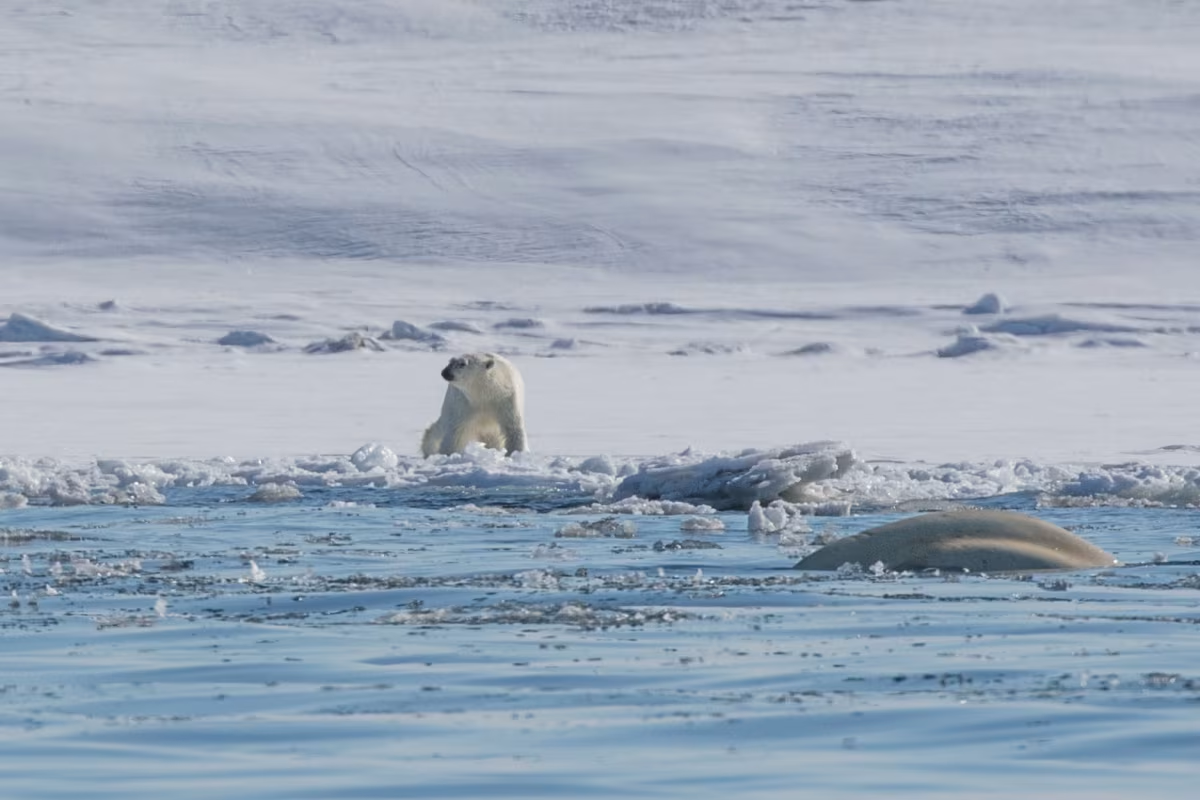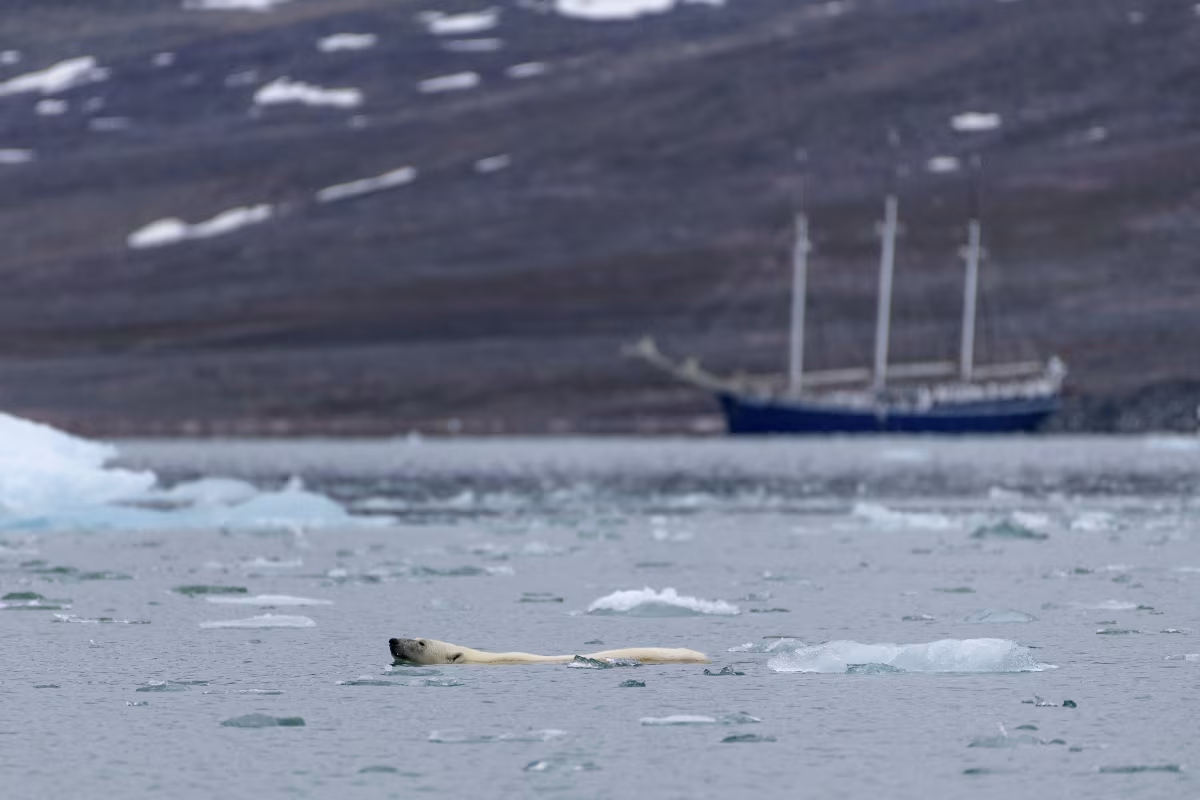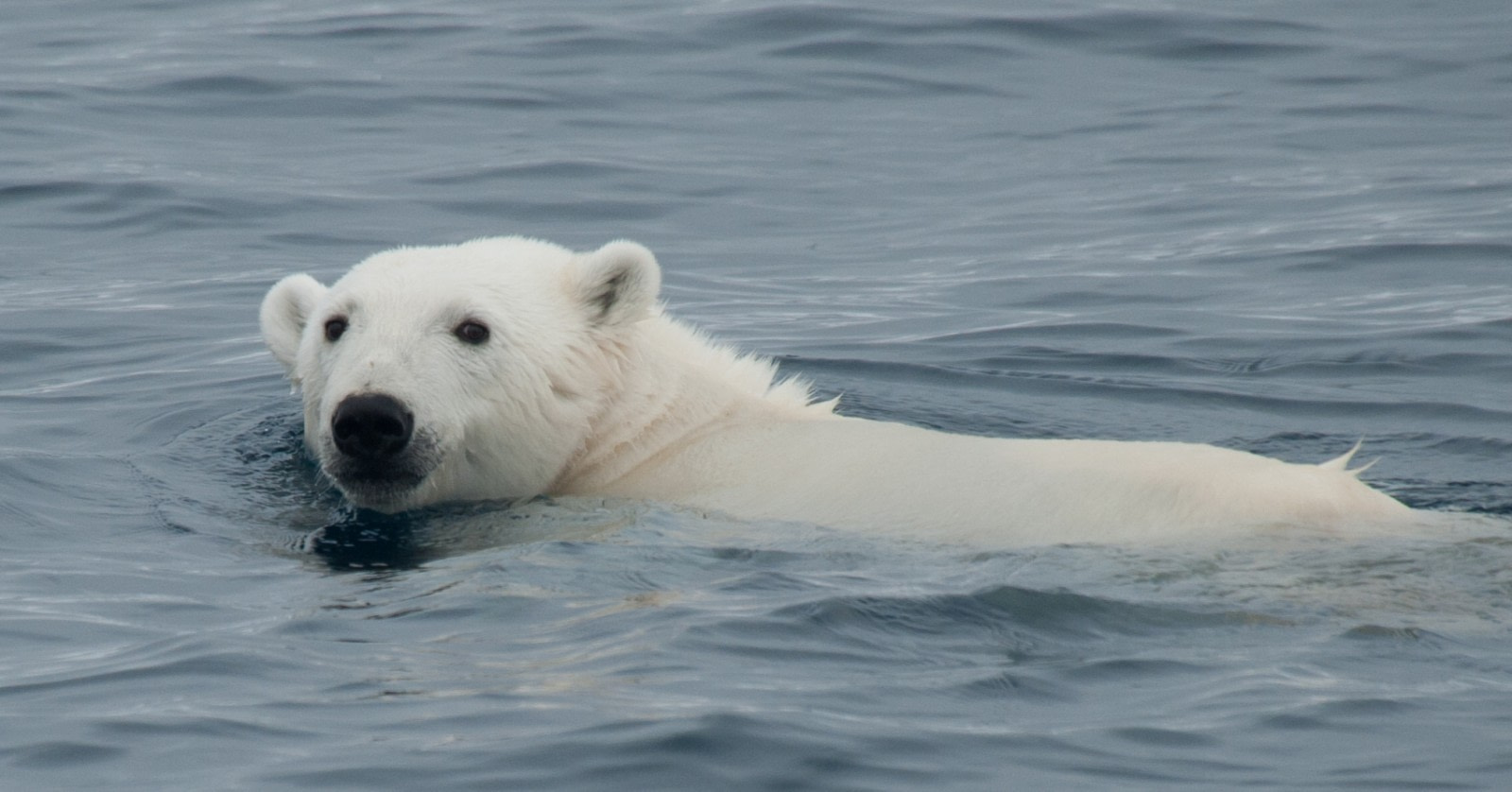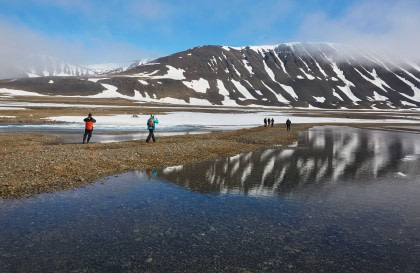Polar bears are known to dive underwater for short periods of time in order to hunt seals and other food sources, but one of these creatures recently shattered all known diving records for this species. The typical dive lasts approximately 30 seconds, although at least one polar bear had previously been recorded staying under water for one minute and 12 seconds.
This would have been an impressive enough record because it more than doubles the average dive. Therefore, most researchers probably never expected to encounter a polar bear that could stay underwater for much longer than 72 seconds. However, our understanding of exactly how long a polar bear can stay submerged while hunting for food was shattered in the icy water near Svalbard.

Picture by Martin Berg
How long was the dive?
According to polar bear expert Rinie van Meurs (expedition leader aboard multiple Oceanwide Expeditions Arctic expeditions) and Dr. Ian Stirling, the new record for polar bear diving is an astounding thee minutes and 10 seconds. Unless this one particular polar bear happens to have an unusually large lung capacity, we can now safely assume that these creatures have the ability to remain underwater for an extended period of time.
To put this into perspective, the average human can only hold their breath underwater for two minutes. Ricardo Bahia is in the Guinness Book of World Records for staying underwater for an almost unbelievable 20 minutes and 21 seconds, but he was only able to accomplish this feat after breathing in pure oxygen first. The polar bear in Svalbard did not have this unusual advantage, which makes its accomplishment even more noteworthy.
What were the results of the dive?
Stirling and van Meurs have indicated that the polar bear was pursuing some nearby seals when it set the new dive record. Unfortunately, all of the marine mammal’s efforts were for naught as the seals ended up getting away. It was unusual for the polar bear to stay underwater for so long without surfacing even once to double-check on the location of its intended prey, and this may have had something to do with its ultimate failure to obtain a meal.
On the other hand, it is possible that this polar bear and others in the local area have perfected longer diving techniques and are usually more successful. After all, animals in the Arctic are often able to go unobserved for long periods of time. With this latest record, though, it is a virtual certainty that researchers will be keeping a closer eye on the area’s polar bears in order to determine if the dive was an anomaly or a new common occurrence.

Picture by Olga Lartseva
What was the depth of the dive?
Staying underwater right next to the surface makes it much easier for any species to surface when they need to take a breath, and this would naturally make a shallow dive much less newsworthy. In this particular case, van Meurs and Stirling recorded the polar bear reaching a dive depth of somewhere between 45 and 50 meters (147.6 and 164 feet). This means that the animal could not surface extremely quickly if needed, so it must have felt either confident enough in its ability or desperate enough for a meal to dive so far down for such a long period of time.
The researchers
Polar expert van Meurs continues to study these magnificent creatures, and he also helps adventurous individuals discover the marine mammals in their natural habitat during our polar bear cruises. With more than 25 years of experience and almost 200 expeditions underneath his belt, it is no wonder that van Meurs was in the right place at the right time to document the record-breaking dive. The expert has also helped educate others about polar bears by writing numerous books, including Polar Bears of Spitsbergen/Svalbard.
Stirling is a researcher from the University of Alberta who retired in 2007. During his long and distinguished career, Stirling served as a research scientist for the Wildlife Research Division of Environment Edmonton. Much like van Meurs, Stirling is dedicated to researching polar bears, and he has published several books and papers on the topic such as Polar Bears: The Natural History of a Threatened Species.
Observing polar bears
Anyone who is interested in observing polar bears in their natural habitat will need to make the trek to the Arctic region, especially to Svalbard. There are once in a lifetime expeditions available to make this a reality. These Spitsbergen cruises take participants out of their daily lives and put them face to face with polar bears in some of the most beautiful and remote places on earth.






